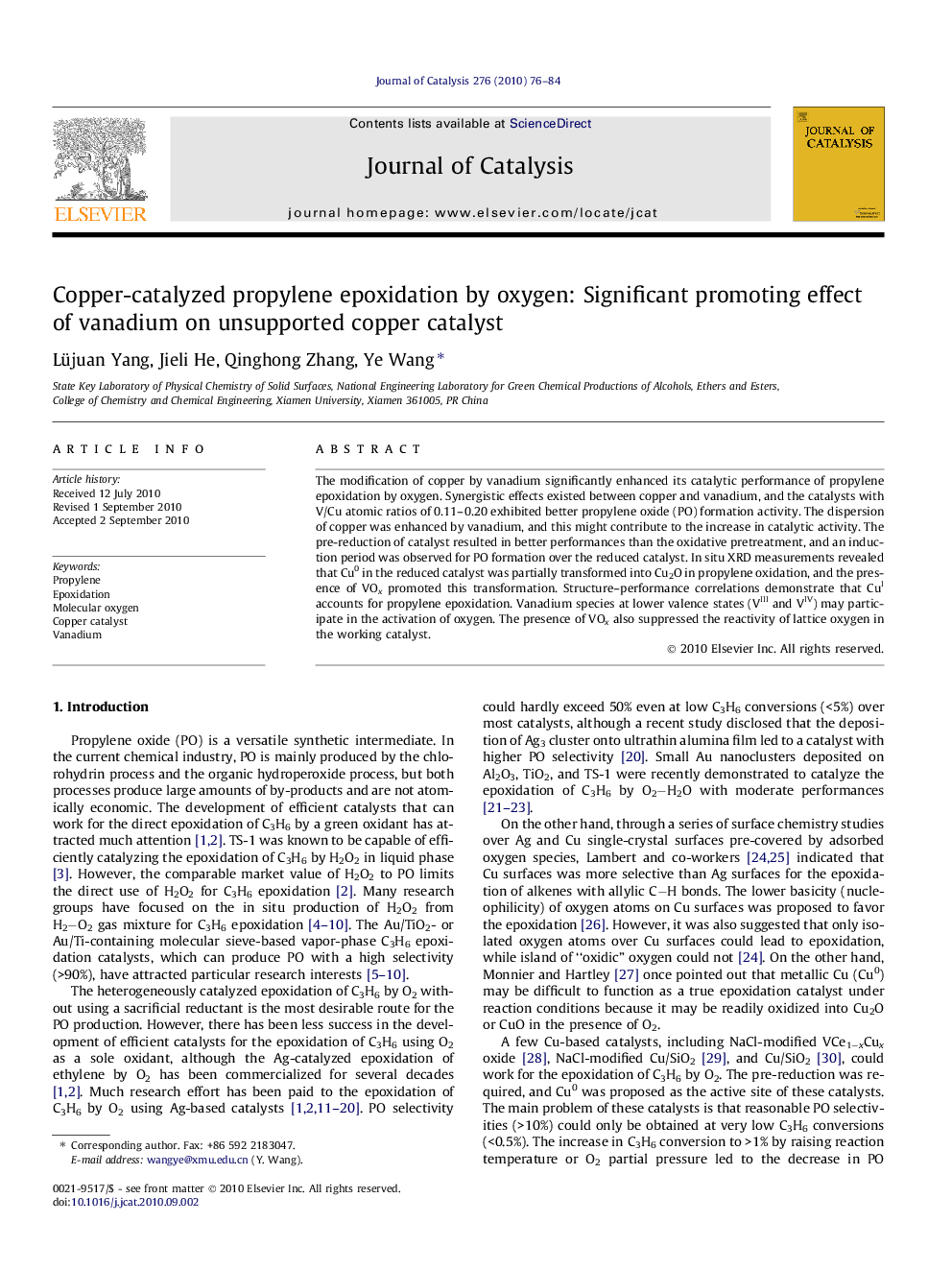| Article ID | Journal | Published Year | Pages | File Type |
|---|---|---|---|---|
| 62057 | Journal of Catalysis | 2010 | 9 Pages |
The modification of copper by vanadium significantly enhanced its catalytic performance of propylene epoxidation by oxygen. Synergistic effects existed between copper and vanadium, and the catalysts with V/Cu atomic ratios of 0.11–0.20 exhibited better propylene oxide (PO) formation activity. The dispersion of copper was enhanced by vanadium, and this might contribute to the increase in catalytic activity. The pre-reduction of catalyst resulted in better performances than the oxidative pretreatment, and an induction period was observed for PO formation over the reduced catalyst. In situ XRD measurements revealed that Cu0 in the reduced catalyst was partially transformed into Cu2O in propylene oxidation, and the presence of VOx promoted this transformation. Structure–performance correlations demonstrate that CuI accounts for propylene epoxidation. Vanadium species at lower valence states (VIII and VIV) may participate in the activation of oxygen. The presence of VOx also suppressed the reactivity of lattice oxygen in the working catalyst.
Graphical abstractModification of unsupported copper by vanadium significantly enhances its catalytic activity for propylene epoxidation. CuI with cooperation of vanadium species at lower valance states is responsible for propylene oxide formation.Figure optionsDownload full-size imageDownload high-quality image (79 K)Download as PowerPoint slide
